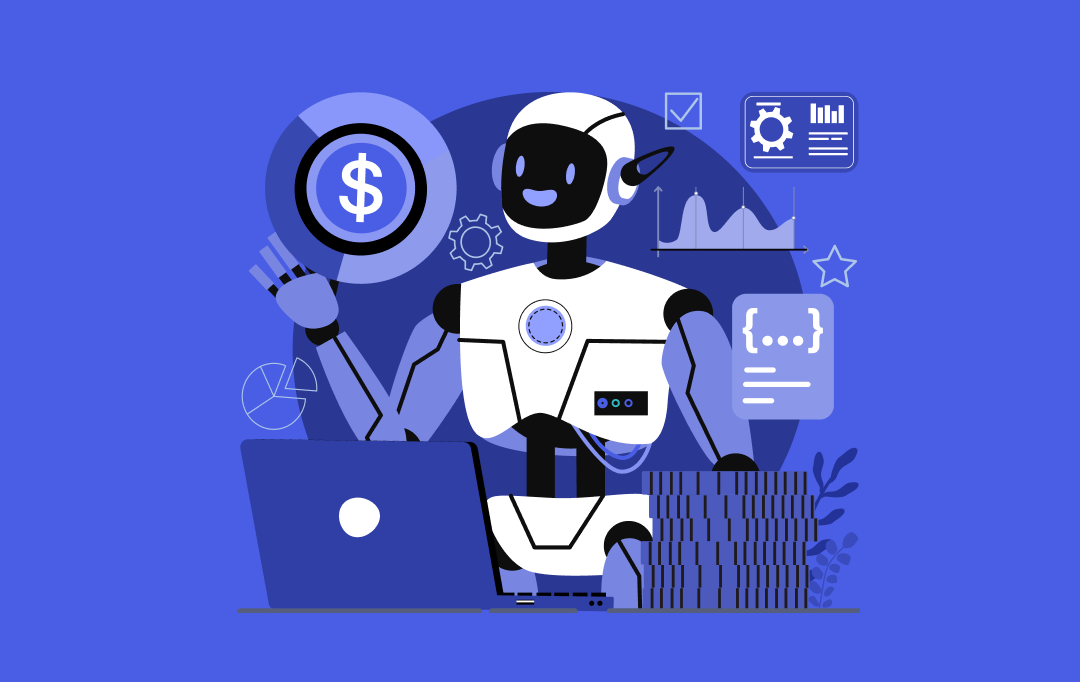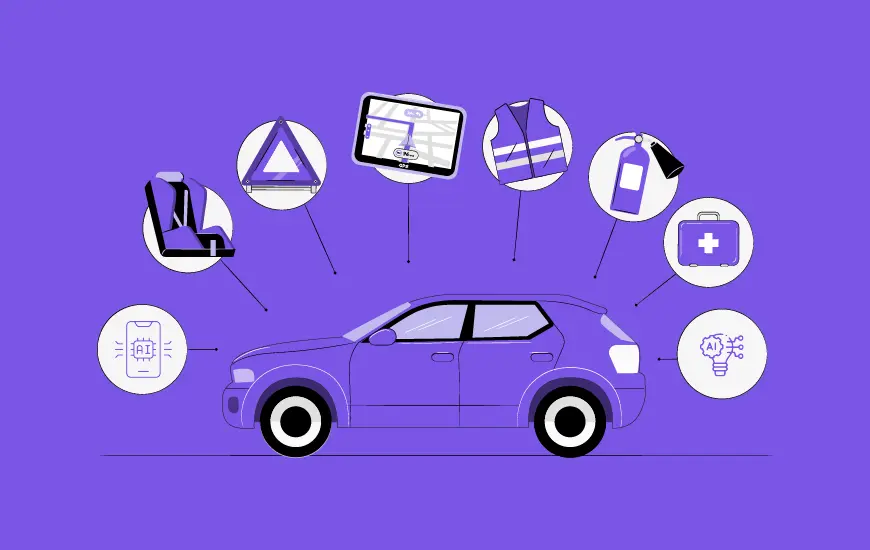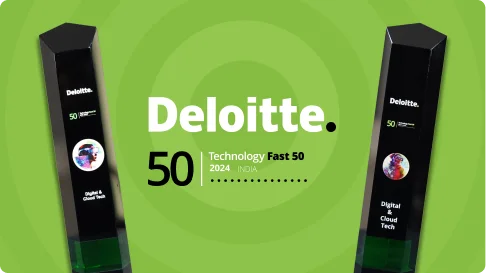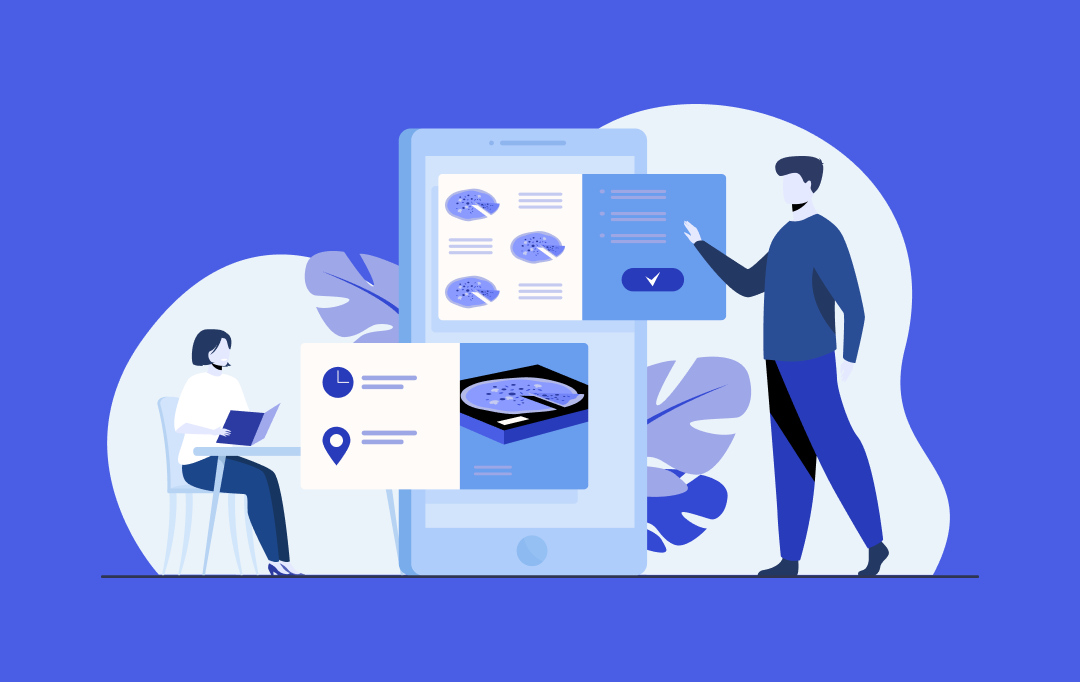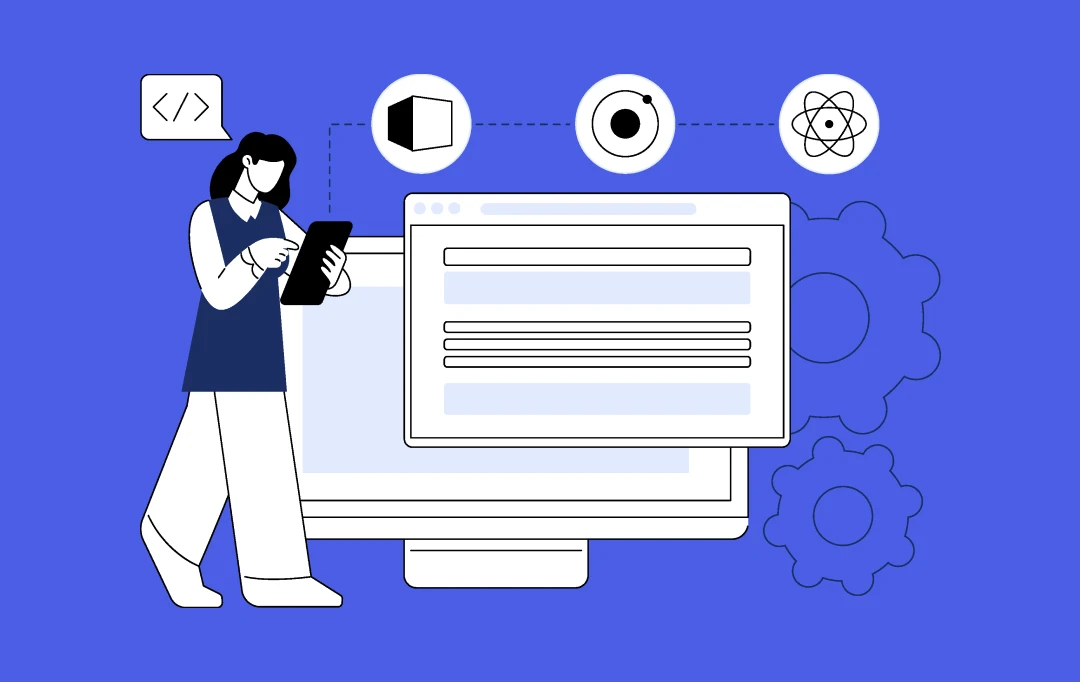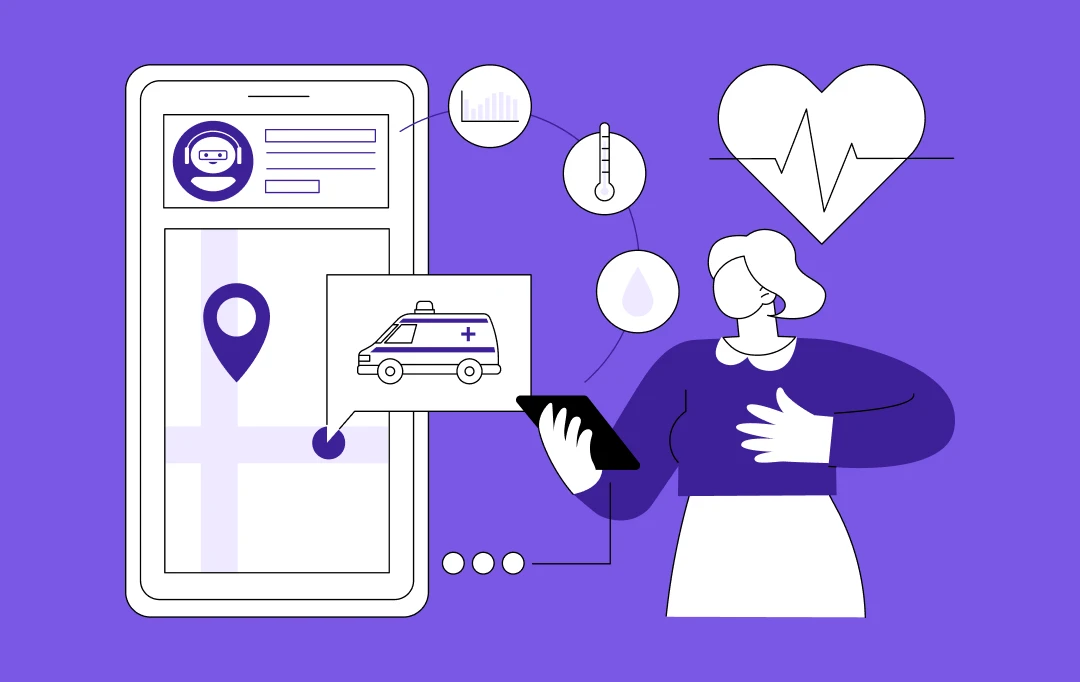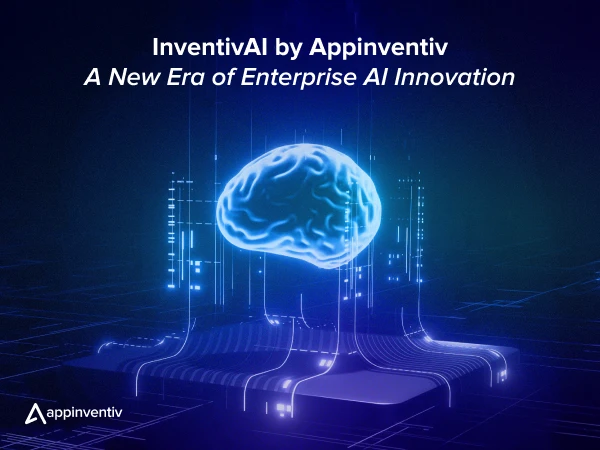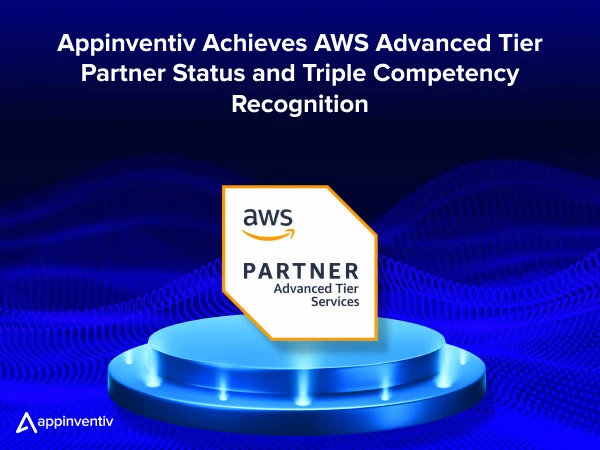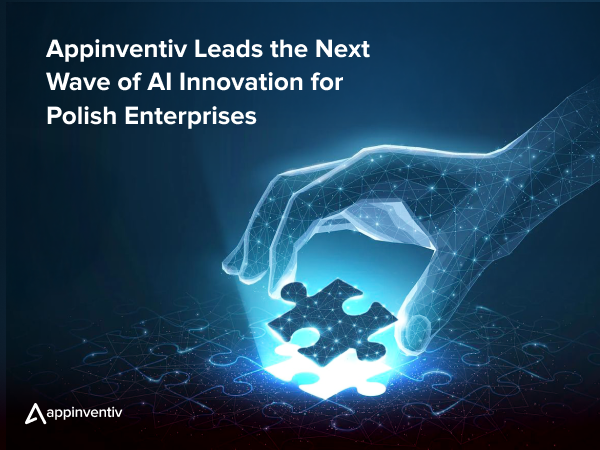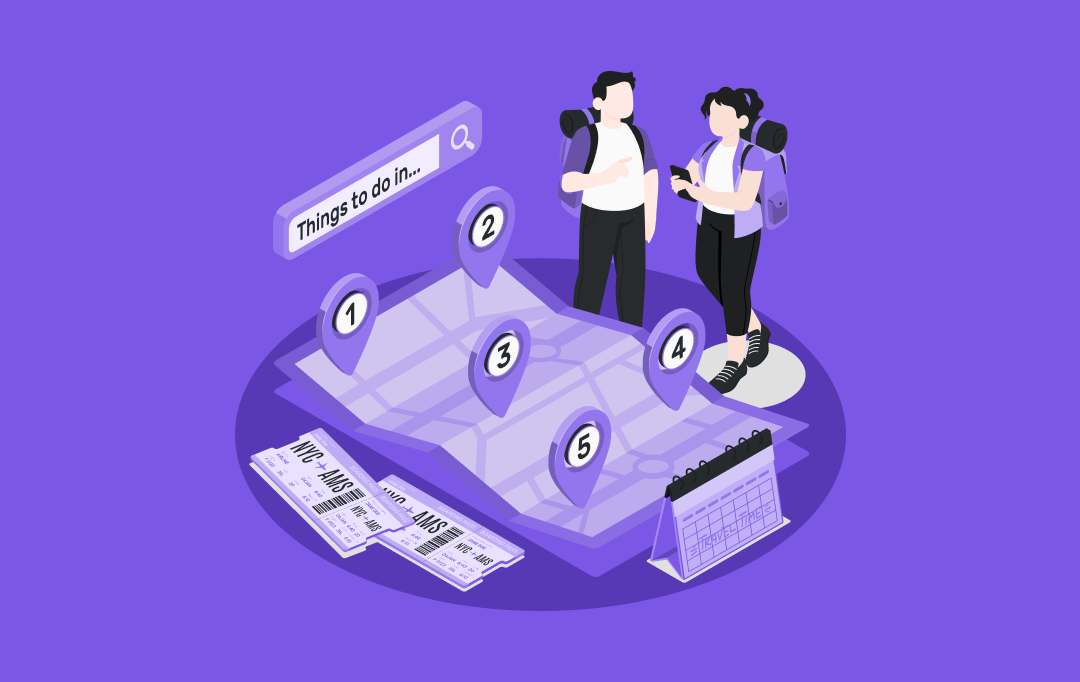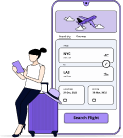- Market Relevancy of AI-Powered Trip Planners: Rising Market Opportunities
- Smart AI Trip Planner: Core Technology Blend
- NLP (Natural Language Processing) Engine
- Recommendation System (Personalization Framework)
- Multi-Modal Data Ingestion Layer
- Dynamic Itinerary Builder
- Personalization Layer
- Analytics & Feedback Loop
- Integrated Booking and Management System
- Cloud Computing & Data Storage
- How To Build an AI Trip Planner App
- Define User Needs & Use Cases
- UI/UX Design
- Working on the NLP Engine
- Backend Development
- Developing the Recommendation System
- Setting Up Multi-Modal Data Ingestion
- Creating a Dynamic Itinerary Builder
- Implementing the Personalization Layer
- Integrating Analytics & Feedback Loop
- Developing Booking & Management Features
- Testing and Iterating
- Launch & Monitor
- Must-Have Features in an AI Trip Planner App: What Users Expect
- Heavily Personalized Itinerary
- AI-Powered Recommendations
- Interactive Maps/Navigation
- Language Translation & Currency Converter
- Social Media Integration
- AI-Powered Chatbots
- Live Updates
- How Much Does It Cost to Build an AI Trip Planner App?
- Factors Affecting the Cost to Build an AI Trip Planner
- Challenges & Risks When You Build An AI Trip Planner App
- Data Acquisition and Quality
- AI Model Accuracy
- Real Time Processing Limitations
- Security & Privacy
- How Appinventiv Can Help You Build The Best AI Trip Planner App?
- Frequently Asked Questions (FAQs)
Key takeaways:
- The travel planner app market is experiencing significant growth, expected to reach $1.4 trillion by 2032,
driven by increasing traveler expectations for smarter, more intuitive AI-powered trip management solutions. - Building an AI trip planner requires a complex tech ecosystem. Successful development demands integration of
NLP engines, multi-modal data ingestion, dynamic itinerary optimization, secure booking APIs, and scalable
cloud infrastructure. - Cost and development complexity vary widely. Basic AI trip planners can start at around $30,000. Still,
full-featured, scalable apps with deep personalization and real-time capabilities may exceed $500,000, with
ongoing costs for maintenance and updates to the AI model.
Imagine planning your dream vacation becoming as easy as an effortless chat session with a friend through a trip planning app with AI. No more tabs or confusing spreadsheets; just a smart assistant by your side that listens and then curates a perfect, timed itinerary tailored to your preferences, budget, and schedule.
Yes, they are AI trip planners.
The edge in today’s hyper-competitive travel industry lies in intelligence, which is why businesses build AI trip planner solutions that anticipate user needs before the actual query. As a business owner, when you build an AI trip planner app, it isn’t just about deploying another solution; it’s more about architecting a smart and adaptive system capable of revolutionizing how travelers plan and book their vacations.
“We believe in reimagining the travel experience, and then using the latest in AI to bring it to life, and with Romie, we’ve done just that.”
By Rathi Murthy, CTO at Expedia Group

AI-powered trip planners harness advanced algorithms, real-time data, and machine learning to build an AI app and recommend:
- Hidden Gems: AI finds unique attractions based on real-time data.
- Route Optimizations: AI calculates efficient routes considering traffic and weather.
- Adaptations to Sudden Plan Changes: AI adjusts itineraries for delays or disruptions
A report by The Business Research Company revealed that the market is projected to grow from USD123.72 billion in 2024 to USD531.95 billion in 2029. With a CAGR of 33.8%, the growth is specifically attributed to increasing demand for trip planning app with AI that delivers personalized travel experiences and the rising impact of AI-driven analytics for operational efficiency, among other factors.
Harness cutting-edge AI to redefine travel. Jump in now and shape the future of exploration!
Market Relevancy of AI-Powered Trip Planners: Rising Market Opportunities
With AI, gone are the days of static travel apps suggesting static itineraries to almost every traveller, irrespective of their personal preferences. Today, travelers expect more:
- Hyper-personalized recommendations
- Real Time Updates
- Touch of Intuition
This is where smart businesses build AI-powered trip planner app solutions and are jumping in, FAST.
As a business owner who wants to build AI-powered trip planner app, two opportunities surface:
- Firstly, personalization is a golden ticket. Customers don’t just want a trip; they want their trip tailored to their budget, vibe, and secret love for quirky museums or spicy street food. AI makes that happen by learning what travelers love and serving up suggestions that feel like a best friend handpicked them.
- Secondly, planning a trip can be a real headache; comparing prices, checking schedules, and dodging tourist traps. One of the key benefits of building an AI trip planner app is that these systems streamline it all, pulling real-time data from APIs like Amadeus or Google Maps to offer the best deals and routes.
In fact, according to Market.Us, the Global Travel Planner App Market is projected to reach approximately USD 1,445.1 billion by 2032, up from USD 544.1 billion in 2023, growing at a compound annual growth rate (CAGR) of 11.9% between 2023 and 2032.
This growth reflects increasing traveler demand for smarter, more efficient trip management solutions. AI integration can enhance these apps by offering personalized itineraries, real-time recommendations, and seamless booking experiences. These features attract more users and create competitive advantages, driving higher user engagement and revenue potential in a booming market. In addition, by integrating Causal AI, trip planner apps can predict user preferences more accurately based on causal relationships.
So, what is clear from the above excerpt? When you build AI trip planner, the opportunity becomes a goldmine of user intent and behavioral data, waiting to be monetized and utilized for algorithm optimization.
Also Read: AI in travel and tourism
Smart AI Trip Planner: Core Technology Blend
What does it take to build an AI trip planner with truly intelligent capabilities? For you, the answer lies beyond surface-level features. Creating a truly smart trip planner build AI system that orchestrates a symphony of advanced components, right from data personalization engines to real-time conversational AI interfaces. Let’s break down the core building blocks in detail:

NLP (Natural Language Processing) Engine
When considering the best tech stack to build an AI trip planner, this NLP engine forms the brainy core that makes it feel like chatting with a friend who is available 24*7. It allows you to understand and interpret what you say or type.
Different from average AI assistants, advanced trip planner build AI systems that understand complex language processing, like “Find me a stay in Paris”, it can grasp more subtle and detailed inputs like “Want a thrilling getaway somewhere not very touristy, with cold temperature.” NLP translates the desires into actionable suggestions.
| NLP Capability | Description |
|---|---|
| Analyzes sentiment | Detects your mood or preferences, such as whether you prefer a relaxing or adventurous trip. |
| Extracts complex preferences | Picks up multiple factors from your request, such as destination type, atmosphere, budget, and activities. |
| Understands context | Understands vague or relative terms, like ‘somewhere like Tuscany but cheaper.’ |
| Remembers conversation history | Recalls your previous trips or preferences to tailor suggestions more personally. |
To understand NLP better, have a read of NLP applications and their use cases for modern enterprises.
Recommendation System (Personalization Framework)
A machine learning-powered recommendation system is a tool that combines collaborative and content-based filtering, integrating both the wisdom of the crowd and individual preferences, just like the Netflix recommendation engine.
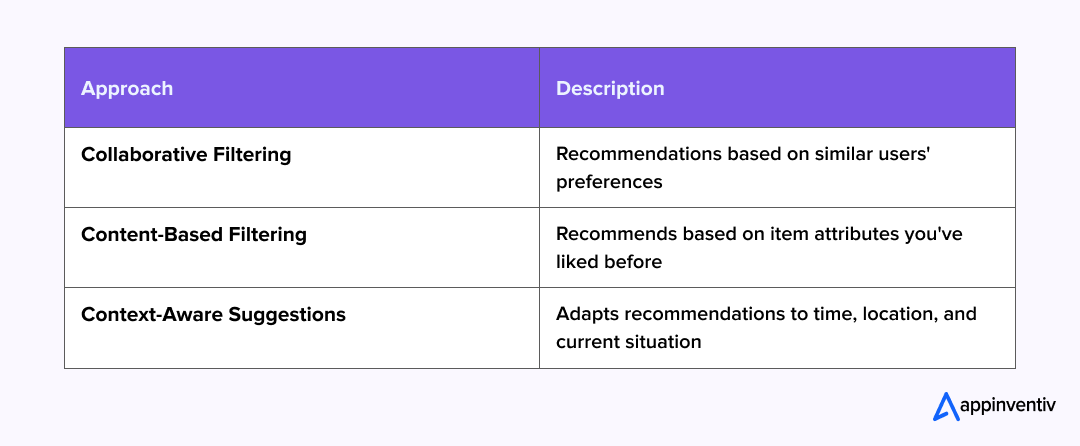
Collaborative Filtering
Collaborative filtering works by analyzing user behavior to find patterns and similarities among users. It groups users into “neighborhoods” based on shared tastes and recommends items that others with similar preferences have enjoyed but you haven’t yet experienced. This method captures emerging trends and popular choices within communities, following the core principle: “People who liked X also liked Y.”
Content-Based Filtering
When you build an AI travel planner app, content-based filtering centers on the characteristics of items and your interaction history. It analyzes features of items you’ve previously liked to build a preference profile, then recommends new items sharing similar attributes. The concept is based on – “You liked this movie because it’s a comedy with a strong female lead, so you might like this other one that’s similar.”
Context-Aware Suggestions
The most advanced recommendation systems go beyond preferences by incorporating real-time context. They consider factors like the time of day, day of the week, or season; your current location; recent searches or actions; the device you’re using; and your current activity or goal. This enables them to provide suggestions that are timely, relevant, and perfectly tailored to your immediate situation.
Multi-Modal Data Ingestion Layer
A multi-modal data ingestion layer serves as the foundation for AI-powered systems by collecting diverse data types from multiple sources. It pulls structured data like flight schedules and hotel availability from travel APIs, alongside unstructured data including user reviews and social media posts. The system continuously ingests user behavior patterns, preferences, real-time geolocation data, weather conditions, and social signals.
Must Read: Multimodal AI – 10 Innovative Applications and Real-World Examples
Dynamic Itinerary Builder
Traditional travel planning often relies on fixed itineraries. However, with AI, you get to have a more flexible and adaptive approach. The system accounts for real-time variables like weather forecasts, current traffic conditions, venue opening hours, and unexpected closures. If rain is predicted, it might suggest indoor activities. If there is heavy traffic, it adjusts timing or routes accordingly.
| Feature | Description |
|---|---|
| Auto-generate Optimal Day-wise Plans | AI creates day-by-day itineraries based on your interests and destination, organizing activities efficiently. |
| Account for Real-time Constraints | The AI adjusts for changes like weather, traffic, or opening hours, ensuring plans remain relevant and flexible. |
| Allow Drag-and-drop or Auto-regeneration | Users can manually adjust the itinerary or let AI auto-regenerate it based on new inputs or changes. |
Personalization Layer
The personalization layer creates tailored experiences that build user loyalty by adapting to individual characteristics and behaviors. It recognizes different traveler types and adjusts the interface accordingly.
| Component | Description |
|---|---|
| Profile-Aware Content & UI | Adapts interface based on traveler type (solo vs family). Displays relevant options, such as group bookings for families or solo experiences for individuals. |
| Behavioral Notifications | Sends tailored alerts based on past behavior. Business travelers get flight delays and co-working alerts; leisure travelers get event and restaurant recommendations. |
| Multi-Lingual & Cultural Awareness | Provides global accessibility through language support and culturally appropriate messaging. Adapts communication styles, imagery, and suggestions to local customs and preferences. |
Bonus Read: Key Challenges Faced in Developing Multilingual Mobile Apps
Analytics & Feedback Loop
The analytics and feedback loop are in place to create a continuous learning system that improves AI’s performance over time, through every user interaction. The three main components of this loop are User Satisfaction Score, Drop-off Point Analytics, and Adaptive Learning. Let us understand these three major components through the table below.
| Components | Description |
|---|---|
| User Satisfaction Scores | Collects direct quality metrics through ratings, surveys, and feedback forms. Tracks acceptance/rejection rates of recommendations to measure success across different suggestion types. |
| Drop-off Point Analytics | Monitors where users abandon bookings or stop engaging to identify friction points. Analyzes patterns, such as payment stage exits or hotel selection abandonment, to signal potential issues. |
| Adaptive Learning | Uses trip completion data and post-travel reviews to refine future recommendations. Learn from both successful trips and disappointing experiences to adjust algorithm preferences. |
Integrated Booking and Management System
The smartest trip planners don’t only suggest what to do or where to go, they help you in booking, organizing, and managing your trip seamlessly. To do this, they rely on key capabilities like Secure Booking API, Unified Itinerary Management, Change Management, and Multi-Platform Synchronization.
| Feature | Description |
|---|---|
| Secure Booking APIs | Secure connections to airline, hotel, car rental, and tour reservation systems for instant and safe bookings. |
| Unified Itinerary Management | Consolidates all bookings and plans into one clear, comprehensive itinerary that is accessible at any time. |
| Change Management | Handles cancellations, modifications, and disruptions by automatically adapting and updating your itinerary. |
| Multi-Platform Synchronization | Keeps booking information and itineraries synced across devices, ensuring up-to-date access wherever you are. |
Cloud Computing & Data Storage
Cloud computing and data storage solutions form the backbone infrastructure that enables AI trip planners to function at scale and deliver consistent user experiences. AI trip planners rely heavily on cloud computing technology to handle the massive amounts of data they collect and process. Instead of storing data locally on a user’s device or a single server, cloud computing uses networks of remote servers hosted on the internet.
| Aspect | Description | Technologies |
|---|---|---|
| Scalability | Auto-adjust resources for demand | Kubernetes, AWS Auto Scaling |
| Reliability | High uptime and data backup | AWS S3, Azure Blob Storage |
| Data Storage | Secure storage for user and travel data | Amazon RDS, MongoDB Atlas |
| Performance | Fast processing for real-time AI | AWS Lambda, TensorFlow Serving |
| Accessibility | Sync across devices with low latency | CDN (CloudFront), Firebase |
How To Build an AI Trip Planner App
Building an AI trip planner involves integrating advanced technologies such as natural language processing, recommendation algorithms, and dynamic itinerary management to create an intelligent assistant that understands user preferences and adapts seamlessly.
Ready for a full step-by-step process? Continue reading below for detailed steps to create a travel planner app using AI:
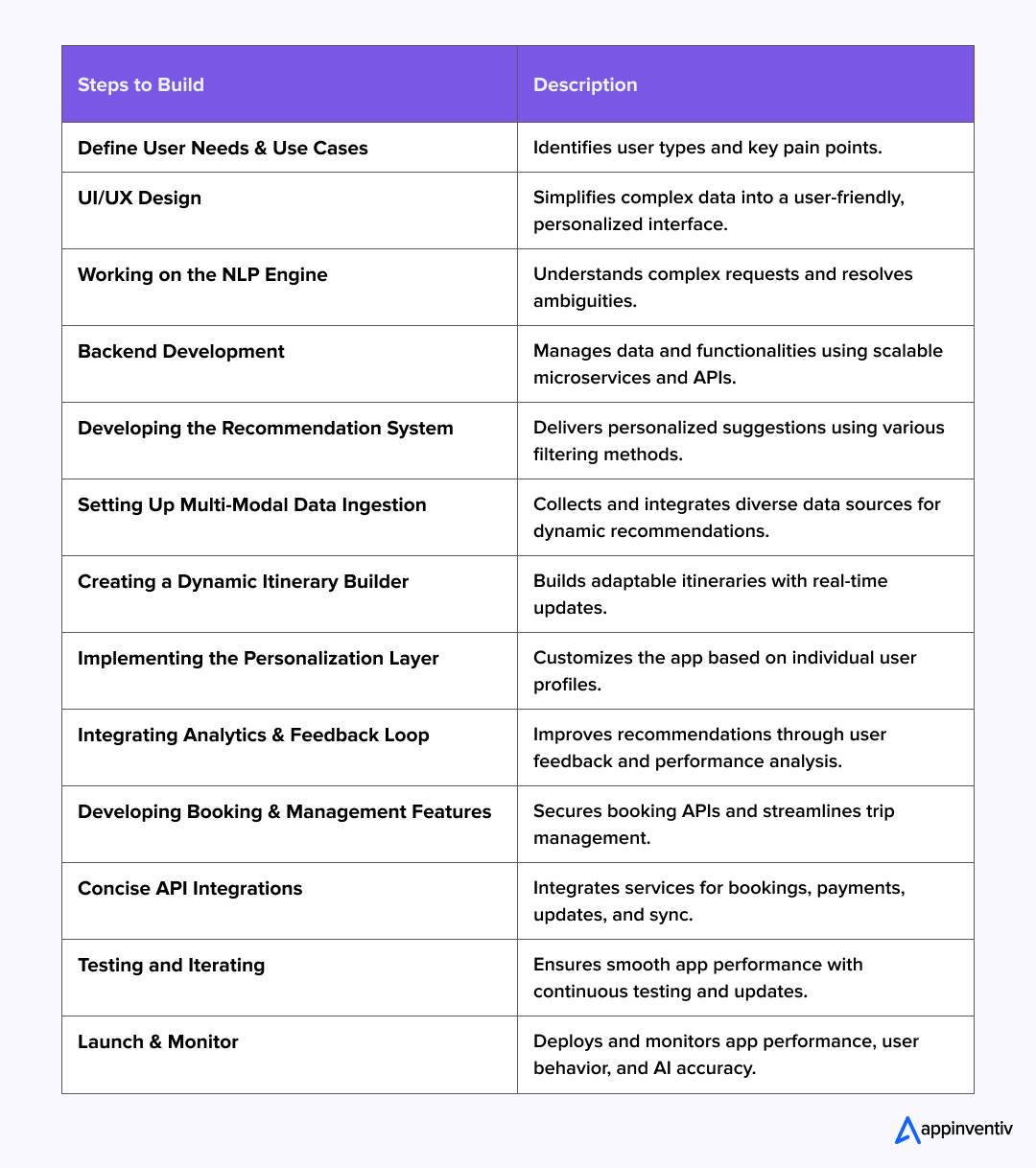
Define User Needs & Use Cases
Before building an AI trip planner, it’s crucial to understand who your users are and what they need clearly. This involves identifying different types of travelers, such as solo adventurers, families with children, or business travelers, as each group has unique preferences and challenges.
Successful AI trip planners tackle travelers’ key pain points like research overload, decision paralysis, coordination hassles, and budget uncertainty. By mapping how users browse inspiration, set constraints, and switch devices, planners can offer timely support. In addition, context matters. Points like first-time travelers, last-minute planners, and cultural differences shape needs.
UI/UX Design
AI-driven trip planners deal with immense complexity, processing real-time data, optimizing itineraries, and generating personalized recommendations. Custom AI trip planner app development requires effective UI/UX design that simplifies this complexity, presenting highly relevant information and actionable options in a clear, digestible manner.
- Real-Time Data Integration: Incorporates live updates from multiple sources (flights, weather, traffic) into the design, ensuring users receive the most relevant and up-to-date information.
- Dynamic and Adaptable Layouts: UI must adjust fluidly to real-time changes in itineraries, such as new recommendations or updates based on user preferences.
- Intuitive Navigation: Ensures users can easily navigate the app, access key features (booking, itinerary changes), and manage dynamic updates without feeling overwhelmed by the data.
Working on the NLP Engine
Consider an input like “I want somewhere warm but not too touristy, maybe like Bali but in Europe, for around two weeks in spring.” This single sentence contains geographic preferences, seasonal timing, crowd tolerance, duration constraints, and a comparative reference that requires understanding Bali’s characteristics to find European equivalents.
- Ambiguous Terms: Travel language includes terms like “budget-friendly,” “close to the beach,” and “family-friendly,” which vary by individual preferences.
- Clarifying Requests: The NLP engine should ask follow-up questions or learn from user behavior to resolve ambiguous terms.
- NLP Engine: It needs to understand natural, conversational language, process complex sentences, slang, and varied phrasing.
- Beyond Keyword Matching: The engine should capture true traveler preferences like destinations, travel dates, budget, and activity interests.
Backend Development
In an AI trip planner, Backend Development forms the robust operational backbone, managing data, orchestrating functionalities, and hosting the AI’s core logic. The best tech stack to build an AI trip planner centers on a microservices architecture, ensuring scalability and fault isolation, with an API Gateway acting as the central entry point. Comprehensive data management is crucial, utilizing a mix of SQL, NoSQL, Graph, and Search databases (like Elasticsearch) alongside powerful data pipelines (e.g., Kafka, Spark) to handle multi-modal data ingestion and processing.
Must Read: Choosing The Right AI Tech Stack
The backend orchestrates extensive API integrations with external travel service providers, from GDS for flights and hotel booking platforms to payment gateways, weather services, and mapping APIs, managing credentials and rate limits. For scalability and performance, it leverages cloud-native features like auto-scaling, load balancers, and container orchestration (Kubernetes), complemented by caching and asynchronous processing to maintain responsiveness.
| Aspect | Key Implementation Points |
|---|---|
| Architecture | Microservices, API Gateway, Containerization (Kubernetes) |
| Data Management | Mixed DBs (SQL, NoSQL, Graph, Search), Data Pipelines (Kafka, Spark) |
| API Integrations | GDS, Hotel, Payment, Weather, Maps APIs; Key/Rate Limit Management |
| Scalability & Performance | Cloud-native (Auto-scaling, Load Balancers), Caching, Asynchronous Processing |
| Monitoring & Logging | APM, Metrics, Centralized Logs, Alerting |
Developing the Recommendation System
One main challenge when you build an AI trip planner is that booking frequency is much lower than in other domains like music or shopping. A user might only take a few trips per year, making it harder to establish reliable patterns. Travel collaborative filtering often incorporates implicit signals like browsing behavior, saved destinations, and time spent researching specific locations to build richer user profiles despite sparse booking data.
- Collaborative Filtering: Identifies popular destinations based on user preferences.
- Content-Based Filtering: Ranks destinations by matching user interests and attributes.
- Context-Aware Suggestions: Building a recommendation system based on real-time conditions and personal circumstances.
- Efficient Data Pipelines: Continuously updates recommendations without full recalculation.
Setting Up Multi-Modal Data Ingestion
Setting up multi-modal data ingestion is crucial for delivering accurate and up-to-date travel recommendations. By integrating structured, semi-structured, and unstructured data sources, an AI-powered trip planner can offer personalized and dynamic travel experiences.
| Data Type | Source | Purpose |
|---|---|---|
| Structured Data | Flight APIs (Amadeus, Skyscanner) | Provides flight schedules, prices, and availability |
| Structured Data | Hotel APIs (Booking.com, Expedia) | Provides hotel rates and room types |
| Structured Data | Weather APIs (OpenWeatherMap) | Provides weather forecasts and conditions |
| Semi-structured Data | User Reviews (TripAdvisor, Yelp) | Analyzes sentiment and feedback from customers |
| Unstructured Data | Social Media (Twitter, Facebook) | Captures real-time trends and public discourse |
This process typically utilizes API calls for structured data, potentially complemented by controlled web scraping for specific review sources, and leverages streaming technologies, such as Apache Kafka, for high-volume, real-time social media feeds.
Bonus Read: API Development Guide
Creating a Dynamic Itinerary Builder
When you build an AI-powered trip planner app, implementing a Dynamic Itinerary Builder is a sophisticated task that integrates diverse technologies to create a continually adapting travel plan.
| Component | Description |
|---|---|
| Multi-modal Data Ingestion | Feeds a knowledge base of Points of Interest (POIs) with static and dynamic data, including weather, traffic, transport updates, and attraction status (crowd levels, closures). |
| Itinerary Optimization Algorithm | Generates a day-wise plan by considering user inputs (interests, budget, pace) and POI characteristics (hours, duration, proximity). Utilizes techniques like graph theory, constraint programming, and heuristics. |
| Dynamic Re-optimization | Continuously monitors real-time data (e.g., weather changes, traffic issues, attraction closures) and triggers immediate itinerary updates when necessary. |
Implementing the Personalization Layer
Implementing the Personalization Layer in an AI trip planner is about tailoring every aspect of the user experience to the individual traveler, making the app feel intuitive and bespoke. This begins with establishing comprehensive user profiles, gathering both explicit data (like interests, budget, and travel companions) and implicit data (such as browsing history and app engagement patterns), stored in flexible databases for dynamic updates.
This rich profile then fuels AI-powered recommendation engines that utilize content-based, collaborative, and hybrid filtering techniques and potentially deep learning to intelligently suggest destinations, accommodations, activities, and dining options perfectly aligned with the user’s unique preferences.
| Feature | Description |
|---|---|
| Dynamic UI Adaptation | Customizes the home screen, prioritizes search results, and adjusts language, currency, and accessibility based on the user’s profile. |
| Intelligent Notification System | Sends personalized reminders, real-time itinerary changes, context-aware suggestions, and offers, all tailored to the user’s preferences and cultural sensitivity. |
Integrating Analytics & Feedback Loop
To build an effective AI-powered trip planner app, integrating analytics and a feedback loop is crucial for continuous improvement. By collecting both quantitative and qualitative data, the app can evolve to better meet user needs and enhance overall experience.
| Feature | Description |
|---|---|
| Analytics & Feedback Loop | Collects quantitative (behavior tracking, feature usage) and qualitative (surveys, sentiment analysis) data to improve the app. |
| Custom AI Trip Planner App Development | Uses A/B testing to validate features and improve user experience through iterative updates and enhancements. |
| Future of AI Trip Planner App | Tracks user interactions and performance metrics, feeding insights into AI models for continuous adaptation, improving personalization, and optimization. |
Developing Booking & Management Features
Developing robust booking and management features is essential for creating a seamless travel experience. By integrating secure booking systems and unified itinerary views, an AI-powered trip planner can simplify travel planning while enhancing user satisfaction.
| Feature | Description |
|---|---|
| Secure Booking | Integrates robust APIs with travel service providers (flights, hotels, activities, car rentals) and PCI DSS-compliant payment gateways for your app. |
| Unified Itinerary View | Combines all reservations into one intuitive itinerary, pulling details from direct bookings or parsing external confirmation emails. |
| Build AI-powered Trip Planner App | Leverages these features to enhance the user experience, ensuring seamless travel planning and booking. |
Concise API Integrations for AI Trip Planner (Booking & Management)
| Feature Category | Core Purpose | Example API Providers / Types |
|---|---|---|
| Booking | Search, availability, secure reservation, and manage bookings. | Travel Aggregators/GDS: Amadeus, Sabre, Expedia Partner Network, Booking.com Partner, Viator, Rentalcars.com |
| Payment Processing | Securely handle all user transactions. | Stripe, Braintree, PayPal, Adyen |
| Real-time Updates & Notifications | Send alerts, manage booking changes, and push notifications. | Twilio (SMS), SendGrid (Email), Firebase Cloud Messaging (Push) |
| Itinerary Synchronization | Sync trip details with external calendars. | Google Calendar API, Microsoft Graph API (Outlook), Apple Calendar API |
| Mapping & Navigation | Display locations, routes, and provide directions. | Google Maps API, Mapbox API |
| User Authentication | Secure user login and profile management. | Firebase Authentication, Auth0, OAuth 2.0 services |
Testing and Iterating
Testing and Iterating is a critical phase in the development of any AI trip planner app. It ensures that the app functions smoothly, is secure, and delivers a seamless user experience through continuous testing and improvements.
| Testing Phase | Description |
|---|---|
| Unit, Integration, and System Testing | Ensures the code, modules, and entire application function correctly. |
| Performance and Security Testing | Verifies that the system can handle user loads and protect sensitive data. |
| Create AI Trip Planner App | Involves alpha and beta testing with real users to gather feedback on usability, bug identification, and AI feature effectiveness (recommendations, itinerary adjustments). |
Launch & Monitor
Launch & Monitor is a crucial phase that focuses on ensuring your AI trip planner app is deployed efficiently and continuously optimized post-launch. It involves strategic deployment to scalable infrastructure and real-time monitoring to maintain optimal performance.
| Phase | Description |
|---|---|
| Strategic Deployment | Deploys to scalable cloud infrastructure with CI/CD pipelines for app updates. |
| Continuous Monitoring | Tracks system health, user behavior (KPIs, conversion funnels), and AI model performance (recommendation relevance, model drift). |
Bonus Read: Guide to Build an Intelligent AI Model
From killer NLP itineraries to slick real-time booking, let’s build an epic app that slays!
Must-Have Features in an AI Trip Planner App: What Users Expect
To truly stand out, the features of AI trip planner app must include certain essential capabilities that combine smart technology with user-friendly design. These features enable the planner to understand complex preferences, adapt to real-time changes, and offer tailored recommendations.
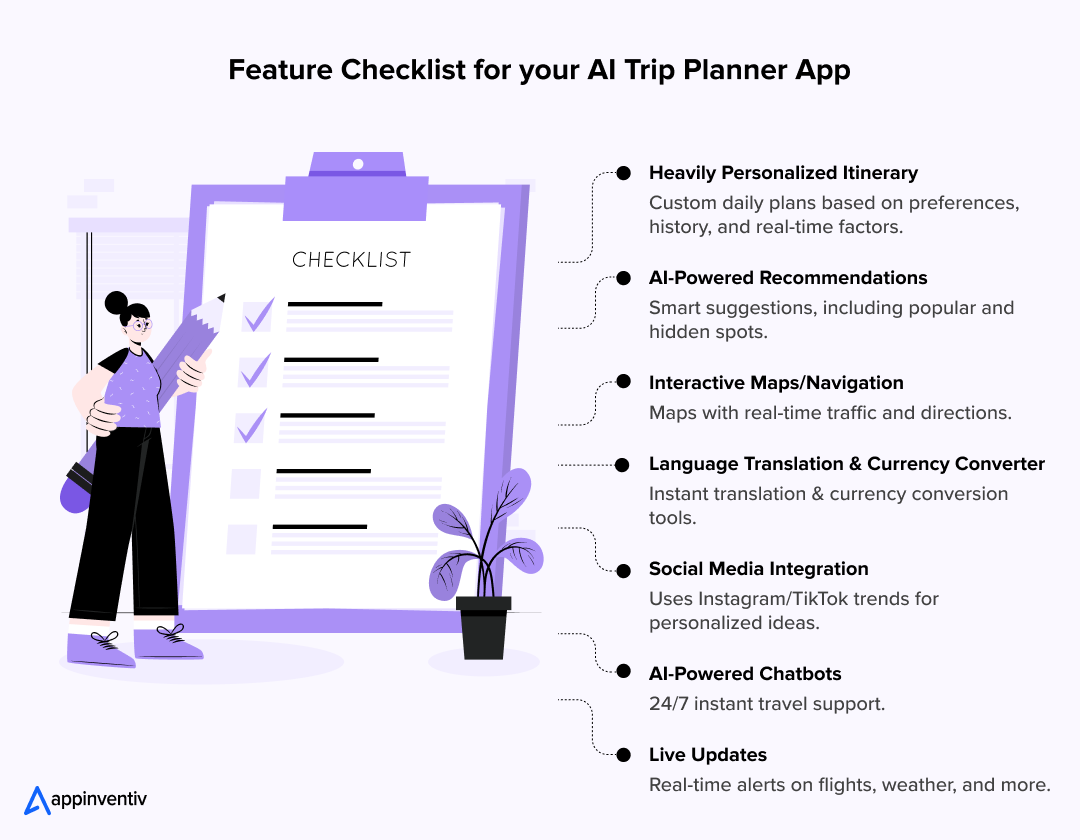
Heavily Personalized Itinerary
The system must create day-by-day travel plans tailored to individual user preferences (interests, budget, travel pace, companions), past travel history, and real-time context. It should suggest optimized routes and timings for attractions, dining, and activities, minimizing travel time and maximizing enjoyment.
AI-Powered Recommendations
Leveraging machine learning, the planner should offer highly personalized suggestions for destinations, flights, hotels, restaurants, and activities. This includes not only popular spots but also hidden gems that align with the user’s specific tastes.
Interactive Maps/Navigation
Integrated mapping functionality is essential for visualizing the itinerary, displaying POI locations, providing real-time traffic updates, and offering turn-by-turn navigation. This helps users understand their surroundings and navigate effortlessly.
Language Translation & Currency Converter
For international AI trip planners, built-in language translation is crucial for effortless communication, whether navigating local phrases or understanding attraction details. Simultaneously, real-time currency conversion tools are vital, enabling travelers to instantly understand costs in their home currency and manage budgets effectively within the planning and booking experience.
Social Media Integration
Social Media Integration is increasingly vital and represents one of the innovative features of AI trip planner app, especially appealing to younger travelers. Modern AI tools can leverage platforms like Instagram and TikTok to extract valuable travel insights from visual content, identify trending destinations or activities, and seamlessly incorporate discovered sights into a user’s personalized adventure.
AI-Powered Chatbots
An AI Trip Planner must offer 24/7 AI-powered support via a chatbot. Since travel issues arise anytime, from sudden flight delays to urgent restaurant needs, users require instant, around-the-clock assistance to navigate unexpected problems and receive immediate solutions.
Live Updates
Live Updates are crucial for an AI Trip Planner to ensure travelers always have the most current information. This means providing real-time alerts on flight delays, gate changes, weather shifts, traffic conditions, and attraction status, allowing the AI to notify users instantly.
How Much Does It Cost to Build an AI Trip Planner App?
To build an AI trip planner app, the process involves significant cost considerations, with total expenses typically ranging from $30,000 for a basic MVP to over $500,000 for a full-featured, highly complex application.
| App Level | Estimated Cost | Key Features |
|---|---|---|
| Basic MVP | $30,000 – $80,000 | Essential features such as simple route planning, basic itinerary recommendations, limited AI integration, and basic UI/UX. |
| Moderate | $80,000 – $200,000 | Includes advanced AI features like real-time data integration, route optimization, basic personalized recommendations, and better UI/UX design with more user interactions. |
| Advanced Level | $200,000 – $500,000+ | Full AI integration with deep learning, real-time dynamic itinerary re-optimization, sophisticated NLP, personalized itineraries, and high-fidelity UI/UX. |
Factors Affecting the Cost to Build an AI Trip Planner
The AI-based trip planner app development cost is primarily driven by multiple factors. Below is a table of the required details:
| Factor | Details |
|---|---|
| AI-based Trip Planner App Development Cost | The cost varies based on AI integration. Basic apps may cost less, but advanced AI features like deep learning and NLP can range from $50,000 to $250,000+. |
| Platform Choice | Developing for a single platform is cheaper than both. Cross-platform frameworks (React Native/Flutter) can save 20-40% in initial costs. When you build an AI travel app, cross-platform options are cost-effective. |
| UI/UX Design Complexity | A basic design is cheaper. High-fidelity UI/UX, including wireframing and testing, can cost $10,000 to $50,000+. |
| Backend Development & Infrastructure | A robust backend with scalable databases and cloud services may range from $40,000 to $200,000+ for setup, with ongoing hosting costs up to $30,000+ per month. |
| API Integrations | Integrations with third-party APIs (flights, hotels, weather) can cost $10,000 to $80,000+, depending on complexity. |
| Development Team Structure & Location | Developer rates vary by region. Hiring an experienced AI development company is recommended for expertise and long-term support when you decide to build an AI travel app. |
| Testing & Quality Assurance | Testing across multiple layers (functional, security, and AI model accuracy) may account for 15-25% of the total development cost. |
| Post-Launch Costs | Ongoing expenses for maintenance, AI model retraining, API fees, and cloud infrastructure typically 15-25% of the initial cost annually. |
Read our blog on Intelligent App Development Cost to have an approximate idea of the tech and complexity involved.
Therefore, in summary, any use case of building an AI trip planner app shows that a Minimum Viable Product (MVP) with core AI features might start at $30,000 – $80,000. A more developed version with advanced personalization, dynamic adjustments, and unified booking features would likely range from $100,000 – $300,000. A full-fledged, highly intelligent, and scalable AI trip planner with all cutting-edge features can easily exceed $500,000.
Schedule A Call
Challenges & Risks When You Build An AI Trip Planner App
To build an AI trip planner app, it is not all stars and shine. It comes with its own hurdles and potential pitfalls, sometimes which can be dangerously impactful. Let’s explore those challenges, followed by potential implementable solutions to address the same:
Data Acquisition and Quality
AI thrives on large sets of data fed into the system. Sourcing real-time, high-quality data from numerous disparate sources (flight APIs, hotel APIs, weather services, local event calendars, user reviews, social media feeds) is a colossal undertaking. Each source has its format, update frequency, and reliability. Inaccurate, incomplete, or stale data leads directly to poor recommendations, flawed itinerary optimizations, and frustrated users. Imagine being sent to a closed attraction or getting a weather forecast that’s completely off. This erodes trust faster than anything.
Solution
Employ data observability tools to monitor data freshness and quality. Consider contractual agreements with data providers, ensuring data quality standards. For unstructured data like reviews, use NLP techniques for sentiment analysis and entity extraction, coupled with human-in-the-loop validation for critical data points.
AI Model Accuracy
Developing AI models fully capable of understanding nuanced user preferences and dynamically optimizing complex itineraries in real time is a difficult task. Factors like predicting human behavior fall among the most complex layers of AI. In addition, Suboptimal recommendations, inefficient itineraries (e.g., too much travel time between attractions), or AI suggestions that feel irrelevant or ‘off’ can quickly lead to user disengagement.
Solution
Start with a Minimum Viable Product (MVP) with simpler AI models, then iterate. Employ explainable AI (XAI) techniques where possible to provide transparency into recommendations. Utilize a hybrid AI approach, combining rule-based systems with machine learning for robustness. Implement continuous retraining of AI models with fresh data and user feedback.
Real Time Processing Limitations
An AI trip planner is responsible for processing and analysing vast data streams to make dynamic adjustments. At the same time, AI also needs to serve millions of potential users, during peak season. Moreover, latency issues, system crashes under load, or inability to process real-time changes effectively can lead to outdated information and a frustrating user experience.
Solution
Design with a microservices architecture from day one for modularity and independent scaling. Leverage cloud-native services (e.g., AWS Lambda, Google Cloud Functions, Kubernetes for container orchestration) for auto-scaling and high availability. Implement streaming data platforms (e.g., Apache Kafka, Amazon Kinesis) for low-latency real-time data ingestion and processing. Employ caching strategies at multiple layers (CDN, in-memory caches like Redis) to reduce load on databases and APIs.
Security & Privacy
Handling sensitive user data (travel plans, payment information, personal preferences) and integrating with numerous third-party APIs (which themselves can be points of vulnerability) poses significant security risks. Data breaches, unauthorized access to personal information, or non-compliance with data privacy regulations (like GDPR, CCPA) can result in massive financial penalties, severe reputational damage, and loss of user trust.
Solution
Conduct regular security audits, penetration testing, and vulnerability assessments. Ensure strict compliance with data privacy regulations (GDPR, CCPA, etc.) through data anonymization, consent management, and data access controls. Partner only with reputable, secure API providers. Implement security best practices throughout the development lifecycle (Security by Design). Utilize encryption for data at rest and in transit.
How Appinventiv Can Help You Build The Best AI Trip Planner App?
At Appinventiv, we are uniquely strategically positioned to help you build an AI trip planner app, leveraging our 9 years of experience and a solid, continuously expanding team of more than 1600 tech experts. Our AI development services directly align with the core needs of a sophisticated AI-powered trip planner.
At Appinventiv, we specialize in developing AI-powered trip planner apps tailored to your unique needs. With a deep understanding of the travel industry and AI technologies, we help create intuitive and personalized travel experiences.
From seamless itinerary management and real-time data integration to advanced AI-driven recommendations, we ensure your app offers smooth navigation and relevant suggestions. Our team works closely with you to integrate essential features, such as dynamic itinerary adjustments, local recommendations, and travel data APIs, making every journey smarter and more enjoyable for your users.
Our approach to backend development and scalability is robust and reliable. We understand the need for a microservices architecture to handle fluctuating user loads and real-time data streams, which is critical for dynamic itinerary adjustments. Our experience with cloud platforms, including AWS, Google Cloud, and Azure, along with technologies such as Kubernetes, ensures that your app will be highly performant and scalable.
In essence, with Appinventiv, you get a team that can efficiently leverage AI techniques, build a scalable and secure backend, and design a user-centric experience, all critical for a leading AI trip planner.
Frequently Asked Questions (FAQs)
Q. How to build an AI-powered trip planner app?
A. To build AI trip planner successfully involves defining features, designing an intuitive UI/UX, and developing AI models for personalized recommendations and dynamic itinerary adjustments. It requires robust backend development for data integration (APIs), secure bookings, and scalable cloud infrastructure. Thorough testing and continuous monitoring post-launch are crucial for iterative improvement and maintaining performance.
Q. How much does it cost to build an AI trip planner app?
A. The cost to build an AI trip planner app varies significantly, ranging from $30,000 for a basic MVP to over $500,000 for a highly complex, feature-rich, and scalable application. This wide range is primarily driven by the complexity of AI features, UI/UX design, backend infrastructure (microservices, databases), and numerous API integrations (flights, hotels, payments, maps). Additionally, ongoing expenses for AI model retraining, cloud hosting, and maintenance are critical post-launch cost considerations.
Q. How long does it take to create an AI trip planner app?
A. Creating an AI trip planner app is a significant undertaking, with timelines largely dependent on complexity. A basic Minimum Viable Product (MVP) with core AI functionalities might take 3-4 months. However, a full-featured, highly intelligent, and scalable application with advanced personalization, real-time dynamic adjustments, extensive API integrations, and robust UI/UX will typically require 9-12+ months of dedicated development effort.
Q. What are the key technologies required to build an AI-powered trip planner app?
A. Building an AI trip planner app requires several core technologies: Natural Language Processing (NLP) engines for understanding user queries, machine learning algorithms for personalized recommendations, and real-time data APIs for flights, hotels, and weather. Essential infrastructure includes cloud computing platforms (AWS, Google Cloud), microservices architecture, AI-powered chatbots, and secure payment gateways. You’ll also need mapping APIs, dynamic itinerary optimization systems, and analytics tools for continuous improvement. The tech stack must support multi-platform development, real-time synchronization, robust security measures, and seamless integration with booking platforms to deliver a comprehensive travel planning experience.


- In just 2 mins you will get a response
- Your idea is 100% protected by our Non Disclosure Agreement.

How to Build a Custom Multilingual Chatbot? Features, Process, Costs
Key takeaways: Multilingual Chatbots Drive Revenue Growth: Companies see higher conversion rates when customers can interact in their native language, with nearly 75% of global customers preferring to buy from websites in their preferred language. Beyond Translation to Cultural Intelligence: Successful implementations require cultural adaptation, not just language translation. Systems must understand context, emotion, and…

How Much Does It Cost to Build an AI App in Dubai?
Key takeaways: AI app costs in Dubai typically range from AED 80,000 for simple builds to AED 800,000+ for enterprise systems. Dubai is past AI experimentation, and not investing now means catching up later at higher cost. The real budget is driven by data, integrations, architecture, and compliance, not just app features. Hidden costs like…
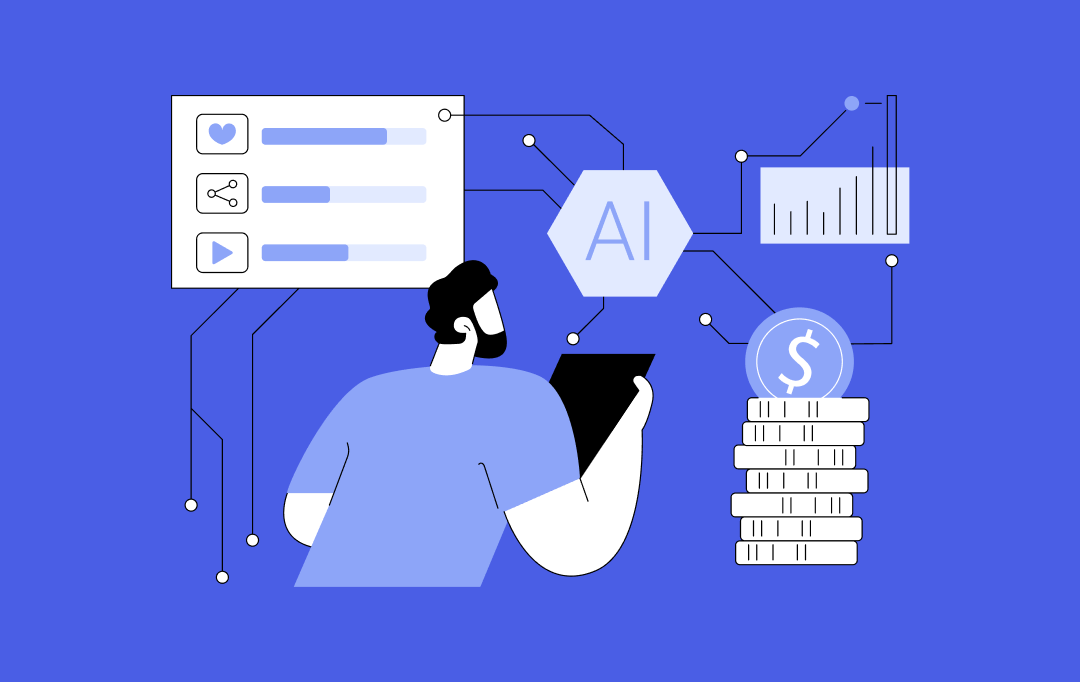
How AI Tokenization is Enabling Secure and Transparent Asset Ownership in 2026
By 2026, AI tokenization has moved beyond early-stage experiments and pilot projects. Tokenizing real-world assets has become a serious commercial strategy for financial institutions, supply chain operators and technology-driven enterprises. A 2025 report by the World Economic Forum in collaboration with Accenture highlights tokenization as a key mechanism for value exchange in modern financial markets.…
